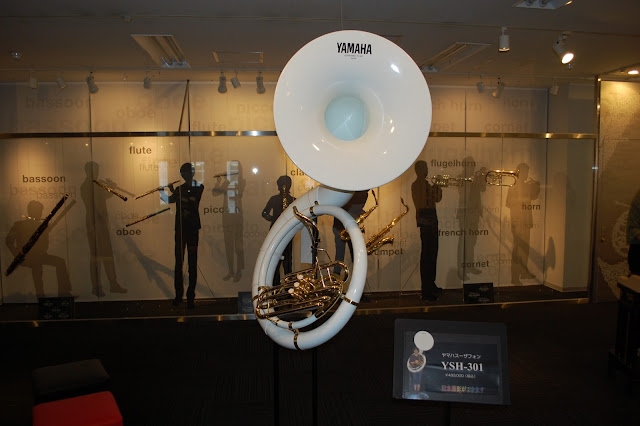
As our educational journey begins to come to a close, he had only one company to visit today, Yamaha Music Instrument Factory in Shizuoka.
Before we took a tour of the assembly floor (no photos), we were given a brief history of the Yamaha Toyooka Factory. It began operations in 1970 with around 900 employees. Its function is being the "Mother factory" of Yamaha wind instruments. This facility also conducts Product Development, Manufacturing Engineering, Procurement and Quality Control.
In 1887, the company was established by Torakusu Yamaha. In 1937, they assisted another instrument company called Nikkan which led Nikkan to become a part of Yamaha in 1970. And in 1987, they were now known as "Yamaha Co."
Some of their product achievements:1965, First Yamaha Trumpet; 1967, First Yamaha Sax; 1968, First Yamaha Clarinet; 1969, First Yamaha Trombone. In 1991, they sold over 5 million instruments and hit 10 million in 2005.
Their production volume is mostly Flutes at 25%. then Sax at 20%, Trumpets at 19% and Clarinets at 18%, Trombones at 7% and other instruments round off the other 11%.
On the factory tour, I figured that most of the work would be done by hand, and it was. The only time machines were being used were to bend the material into shape, clean, or buff and shine the instruments. Everything else was hands on. Even the special designs that are engraved in the instruments are performed by hand. We watched two men do this on saxophones and they made it look really easy. The two men that as this position were artists that applied for this special job.
They even had a quality control room where two people were inside testing the instruments. I asked if prior knowledge of music notes and sounds was a must for these positions. I was told that most of the employees that work at this facility have a love of music or have played some sort of wind instrument playing experience even before they received employment. So they really don't have to ask individuals to have some musical background because everyone that applied already did.
After a tour of the factory floor, their second floor showroom had instruments on display for people to try. Danielle thought she would give it a shot.
Our group picture
After the factory tour, we had a group dinner celebration. This was the name of the restaurant but I can't pronounce it.
This was the last meal that we would have as a group. It was kind of bittersweet knowing the this was the last time we would be together at a class.

We were joined by Daisuke and Margie Hayashi (who showed us Wagashi) and we had a really good time.

We had your typical Japanese meal with foods that I could not identify but I had to try them anyways.

After dinner, Dr. Peng presented us with our certifications of completions of the study abroad program.
One day left.














No comments:
Post a Comment